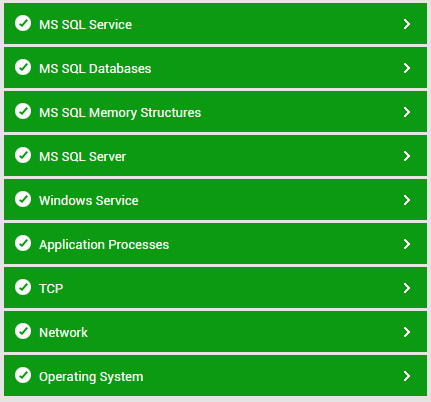Monitoring Microsoft SQL Servers
The pre-built Microsoft SQL monitoring model that eG Enterprise offers (see Figure 1), provides in-depth monitoring for SQL database servers.

Figure 1 : Layer model for Microsoft SQL servers
Each of the layers of this hierarchical model reports a wide variety of metrics ranging from the basic operating system-level statistics to individual database related measurements to those indicating the database engine health. The table below sheds light on what the eG SQL Monitor reveals:
|
Database Service Monitoring |
|
|
Database Server Engine Monitoring |
|
|
Lock Activity Monitoring |
|
|
Database Activity and Space Monitoring |
|
|
SQL Memory Monitoring |
|
|
Operating System Monitoring |
|
The Operating System, Network, Tcp, Application Processes, and Windows Service layers of the layer model in Figure 1 have been discussed in the Monitoring Unix and Windows Servers document. This document explains in detail the Windows Service layer is the MS SQL Server layer.
